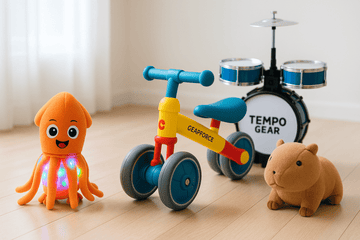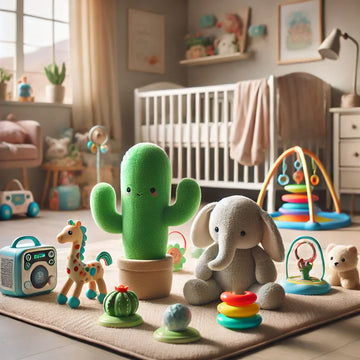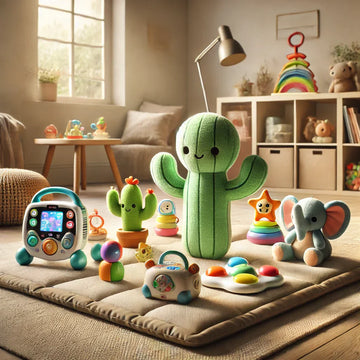Introduction
The talking cactus is a fictional plant that has captured the imagination of many for years. With its anthropomorphic features and ability to speak, the talking cactus has become a popular subject in literature, film, and other forms of media. However, recent advancements in technology have made the idea of a talking cactus no longer a mere fantasy. In this article, we will explore the evolution of the talking cactus from fiction to reality.
Fictional portrayal of talking cacti in literature and pop culture
The idea of a talking cactus can be traced back to ancient folklore and mythology. In Native American cultures, the saguaro cactus was believed to have mystical powers and could communicate with humans. In modern times, the talking cactus has made appearances in literature and pop culture, most notably in the children's book "The Little Prince" by Antoine de Saint-Exupéry, where the protagonist befriends a talking rose on a distant planet. In more recent years, the talking cactus has been portrayed in films such as "Rango" and "Plants vs. Zombies".
The scientific perspective: the possibility of talking cacti
From a scientific standpoint, the idea of a talking cactus may seem far-fetched, but not entirely impossible. Plants have been found to communicate with each other through chemical signals, and some species can even emit sounds that are inaudible to the human ear. Research has also shown that plants can respond to external stimuli, such as touch and light. However, the idea of a plant being able to communicate in a human-like manner remains a topic of debate among scientists.
The evolution of technology: advancements in artificial intelligence
Recent advancements in technology have brought us closer to creating a talking cactus. One such advancement is artificial intelligence (AI), which has allowed for the development of smart plant technology. Smart plant technology utilizes sensors to monitor plant health and growth, and can even allow plants to communicate with humans through text or speech.
The birth of the talking cactus: early attempts at creating a talking plant
The idea of a talking plant has been around for decades, but early attempts at creating a talking cactus were met with limited success. In the 1980s, a team of researchers at the Massachusetts Institute of Technology (MIT) created a device that could translate the electrical signals emitted by plants into speech. However, the device was cumbersome and impractical for everyday use.
The rise of modern talking cacti: the emergence of smart plant technology
In recent years, smart plant technology has revolutionized
the way we interact with plants, including cacti. Companies such as Parrot and Xiaomi have developed devices that allow plants to communicate with humans in real-time. These devices use sensors to monitor the plant's environment and can alert the owner when the plant needs water, sunlight, or other care. Some devices even have the ability to speak, allowing the plant to express itself in a more human-like manner.
The benefits of talking cacti: therapeutic and educational applications
Talking cacti have the potential to be more than just a novelty item. They can have therapeutic and educational applications as well. In a therapeutic setting, talking cacti can provide comfort and companionship to individuals who may be isolated or struggling with mental health issues. For children, talking cacti can serve as a tool for learning about the natural world and the importance of caring for living things.
The limitations and challenges of talking cacti technology
Despite the potential benefits, there are limitations and challenges associated with talking cacti technology. For one, the technology is still relatively new and untested, and it remains to be seen how effective it will be in the long term. Additionally, the cost of smart plant technology can be prohibitive for some, and there are concerns about the environmental impact of producing these devices.
The future of talking cacti: where do we go from here?
As technology continues to advance, it is likely that we will see more sophisticated and advanced forms of talking cacti technology. This could include devices that are better able to understand and respond to human speech, or even cacti that have been genetically modified to have the ability to communicate.
Ethical considerations: the impact of human-like technology on society
The development of talking cacti technology raises important ethical questions about the role of technology in society. As the technology becomes more advanced, it is possible that it could blur the line between what is considered "alive" and what is not. This could have implications for the way we view and treat other living things.
Talking cacti and the environment: sustainability concerns
There are also concerns about the impact of talking cacti technology on the environment. The production of smart plant devices requires resources and energy, and the disposal of these devices can have negative environmental consequences. Additionally, the focus on technology as a solution to plant care may detract from the importance of sustainable, natural solutions.
The talking cactus in popular culture: media representations and trends
As previously mentioned, the talking cactus has made appearances in various forms of media throughout the years. The portrayal of talking cacti in popular culture can reflect larger societal trends and values, and can influence the way we view and interact with plants.
Talking cacti in art and design: creative uses of technology
Smart plant technology has also opened up new possibilities for artists and designers. From interactive installations to wearable devices, talking cacti technology can be used in creative and innovative ways to enhance our relationship with nature.
Conclusion: The impact and potential of talking cacti technology
The development of talking cacti technology represents an exciting and innovative new frontier in the world of plant care and technology. While there are limitations and challenges associated with this technology, there is also tremendous potential for therapeutic, educational, and artistic applications. As we continue to explore the possibilities of talking cacti technology, it is important to consider the ethical and environmental implications of this new technology.
FAQs:
- Can cacti really talk?
No, cacti do not have the ability to talk in the traditional sense. Talking cacti technology utilizes sensors and artificial intelligence to allow plants to communicate in a more human-like manner.
- What are the benefits of talking cacti?
Talking
cacti have the potential to provide therapeutic and educational benefits. In a therapeutic setting, they can provide companionship and comfort to those who may be isolated or struggling with mental health issues. For children, they can serve as a tool for learning about the natural world and the importance of caring for living things.
- What are the limitations of talking cacti technology?
The technology is still relatively new and untested, and it remains to be seen how effective it will be in the long term. Additionally, the cost of smart plant technology can be prohibitive for some, and there are concerns about the environmental impact of producing these devices.
- Are there any ethical concerns associated with talking cacti technology?
Yes, the development of talking cacti technology raises important ethical questions about the role of technology in society, and the potential for blurring the line between what is considered "alive" and what is not.
- Can talking cacti technology be used in creative ways?
Yes, smart plant technology has opened up new possibilities for artists and designers to use in interactive installations and wearable devices to enhance our relationship with nature.





